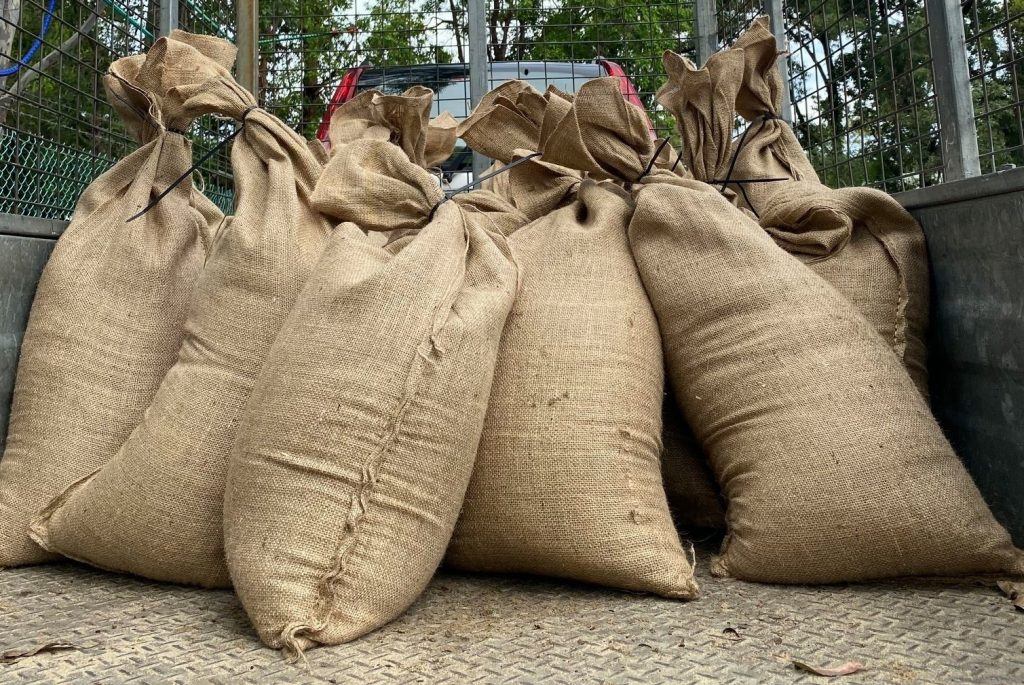Sandbags
Sandbags can reduce the impact of flooding if they’re placed in appropriate locations around your home or business, and when placed correctly with a waterproof membrane like plastic sheeting or a tarp. It is important to understand that sandbag walls are not waterproof and will not stop the water completely. It is recommended to use plastic sheeting with sandbags to reduce the amount of water entering.
Get ready for the wet season by preparing in advance, refer to the locations below where you can collect sandbags. Self-inflating sandbags are a ready-to-use, light weight alternative that don’t require filling. They will self-inflate when they come into contact with water and can be stored a longer time than hessian sandbags. They can be purchased at major hardware stores, some landscape suppliers and other retailers.
Queensland State Emergency Services (SES) offer a useful instructional video on how to sandbag your home and business, more information can be found on their website at https://www.ses.qld.gov.au/diy-using-sandbags. There is also a DIY – Using sandbags to protect your home brochure, which explains how to fill, lay and place sandbags, and more.
Sandbag stations
Council will provide filled sandbags, or sand and bags for residents to fill themselves, in anticipation of some major weather events following assessments of Bureau of Meteorology forecasts for heavy rain.
Residents can collect up to 10 bags per vehicle, this is to ensure there is enough supply for everyone. Council will monitor these locations and replenish, when possible and weather permitting.
The following sandbag stations are open all year round to assist residents to prepare:
- Capalaba Regional Park carpark – 13-19 Pittwin Rd N, Capalaba – open from 6am to 10pm – Google maps directions
- Bayview Conservation Park Staging Area – 487-503 German Church Rd, Redland Bay – open from 6:30am to 6pm – Google maps directions
The following sandbag stations may be opened at the locations below depending on the individual weather event. We will notify residents when sandbag stations are open, please check Council’s disaster dashboard, news site and social media.
- Thornlands Nuway Landscape Supplies – 249 Cleveland-Redland Bay Road, Thornlands – Google maps directions
- Council South Street Depot – 199-205 South St, Cleveland. Entry via South St Carpark – Google maps directions
- Council Depot Dunwich – 11-37 Mitchell Cres, Dunwich, North Stradbroke Island – Google maps directions
- Council Depot Russell Island – 6 Cambridge Rd, Russell Island – Google maps directions
- Council Depot Macleay Island – 22-24 Scarborough Rd, Macleay Island – Google maps directions
- Lamb Island Rural Fire Station – 12 Lucas Drive, Lamb Island – Google maps directions
- Coochiemudlo Island Fire Station – 45 Elizabeth Street, Coochiemudlo Island – Google maps directions
- Karragarra Island Rural Fire Station – 11 Noyes Parade, Karragarra Island – Google maps directions
Please note: enclosed shoes must be worn at all Council sandbag stations.
How to use sandbags
This video by Queensland State Emergency Services (SES) shows Redlands Coast residents how to use sandbags correctly before and during a severe weather event.
Sandbag Storage or Disposal
Used non-hessian sandbags that have not come into contact with sewerage, oil or other contaminants can be wiped down and stored for future use.
If you are unable to store used sandbags or unsure if they are contaminated, these can be opened and sand scattered on lawns and gardens as topsoil, where it will not wash into stormwater drains.
Council encourages you to properly store or dispose of sandbags once severe weather has passed.
Empty sandbags should be placed in the general waste bin. Do not empty or place full sandbags in your general waste bin.
Sandbags that have come into contact with floodwaters can be disposed of at one of Council’s Recycling and Waste centres.
How to store sandbags
After collection, sandbags must be stored in a cool, covered area out of direct sunlight and protected from the elements, when not in use. If sandbags are not stored properly, deterioration is likely to occur. Sandbags must be discarded if they show signs of deterioration.
When stored correctly, sandbags should last up to 12 months.
The new sandbags (non-hessian) can be re-used multiple times, however Council encourages residents to dispose of them properly.


